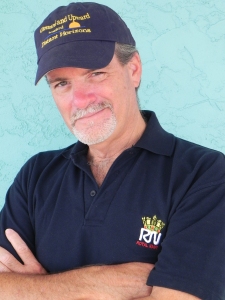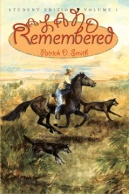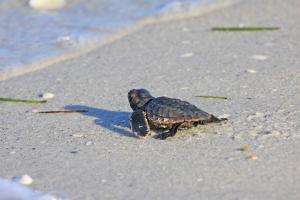A guest blog by Bonnie Nickel, author of Those Mischievous Monkeys.
There are wildlife rescue groups throughout the state of Florida and beyond, including our own Wildlife Center of Venice, started in 2004. Ours, like many, operates solely on donations from the community, receives no government funding, and is staffed almost entirely by dedicated volunteers.
The facility sits just outside of town and on my research trip, all was quiet with the exception of the rustling wings of a flock of opportunistic vultures looking for a free handout. By mid-day, breakfast had been served and the sick had been tended to. When I arrived, one of the founders and licensed rehabilitators, Linda, was feeding the newest drop-off, a young southern flying squirrel, mauled by a domestic cat.
Young squirrels, rabbits, and birds are frequent patients of the center. When asked, center volunteers said that keeping domestic cats indoors would prevent many injuries they treat. Birds in particular are well-represented at the center. A variety of injuries, from golf ball strikes and fishing line entanglements, to a direct and deliberate strike by a kayak paddle (no kidding), land birds at the center. Over half the birds recover and can be released to the wild. The scores of orphaned squirrels, raccoons, and other mammals have a higher release rate and are often released in the groups in which they have been raised. Occasionally, a rehabilitated but unreleasable bird or animal will be sent to another facility to provide companionship for another unreleasable critter of the same species.
On the day I visited, the center housed herons, anhingas, pelicans (including the unreleasable blind pelican hit by a paddle), eagles, a hawk, a northern gannet, a frigate bird, an owl or two, a purple gallinule, a sandhill crane, 30+ raccoons, an equal number of squirrels, and a tortoise. Since the objective is to return wildlife to its habitat, encounters with humans are minimized and the center is only open to those dropping off injured wildlife.
After years of work, the infrastructure of the center is really taking shape. Donated metal shelters for raccoons replace older wire and wooden enclosures. Eagle scouts have constructed several individual structures for squirrels and large birds. Plans are being hatched for a new hospital structure and a 100-foot flyway for rehabilitating larger bird species. The latter project is next on the to-do list and will be accomplished with help from the Sarasota Bay Parrot Head Club—they are hosting a Casino Night fundraiser on January 20, 2012 with donations going to the Center.
Any wildlife center is, by necessity, a community effort. Besides frequent fundraisers, and dozens of volunteers, our center relies on professionals in the community for veterinary care, and local businesses for food and services. The center participates in a program with the local community college allowing students to earn course credit while volunteering at the center. This is an excellent opportunity to develop the next generation of wildlife rescuers and enthusiasts.
The center counts 20 volunteers among it wildlife rescuers—those that actually trap or capture injured wildlife. Some of the most effective rescuers are former hunters. They have the skills required to trap an injured bird or animal and a mindset now focused on conservation. The thrill of the chase still exists but the stakes are higher. For the bird with the fishing line wrapped around its beak, or the fledgling eagle that has lost its parents, the rescue can be a matter of life or death. And the rescuers are persistent. One rescuer responded over 15 times before conditions were just right to trap an injured bird. The great blue heron required a foot amputation because of ever-tightening fishing line around its leg. So far, it is responding well and will likely be released.
One of the center’s few paid employees (funds donated by a local foundation) fields 30-60 calls per day. Not all are rescue requests. Some callers seek information about wildlife in their yard giving the center an opportunity to educate residents about local fauna. The staff and volunteers view community education as one of their critical missions. A little curiosity about our natural surroundings, along with the knowledge imparted by wildlife enthusiasts, can go a long way toward adjusting our actions in ways that will prevent many of the injuries seen at the center. Small actions like properly disposing of fishing line, keeping domestic cats indoors, and refraining from feeding wildlife are simple and effective. Oh yeah, and don’t hit birds with your paddle.
At the center, there are always animals to feed, laundry and dishes to be washed, buildings to maintain, wildlife to capture and transport, events to plan, presentations to give, articles to write, the list goes on. No skill goes unused. Hands-on help, donations of supplies, monetary donations, or attendance at fundraisers like the Casino Night are all helpful. Check the website of the center nearest you to see how you can help.
This is critical work, but in the end, are we just tinkering around the margins by rescuing individual birds and mammals? Maybe, but until there’s a sea change in how we treat nature, wildlife centers help maintain endangered, threatened, and keystone species that may otherwise disappear from the planet. The individuals who engage in this noble work deserve our deepest thanks and whatever support we can afford.
Good news on the global conservation front has been scant lately. I ask myself, is it worth itemizing the good news when it’s vastly outnumbered by the bad? I think so. It’s that little thing called hope—focusing on the good bits while we work on ways to negate the bad. Fortunately there’s been some good news around the world lately about reassessing human priorities. Success in this area may translate into good news for the natural world. In the meantime, here are some glimmers of hope:
 Author Robert N. Macomber, author of the Honor series, will be appearing at Bookstore1 Sarasota on May 23rd at 6pm. He will be discussing “Freemasons and their 30-year struggle to gain Cuban independence in 1898, and the author’s experiences with their fraternity inside modern Cuba today.”
Author Robert N. Macomber, author of the Honor series, will be appearing at Bookstore1 Sarasota on May 23rd at 6pm. He will be discussing “Freemasons and their 30-year struggle to gain Cuban independence in 1898, and the author’s experiences with their fraternity inside modern Cuba today.” 




